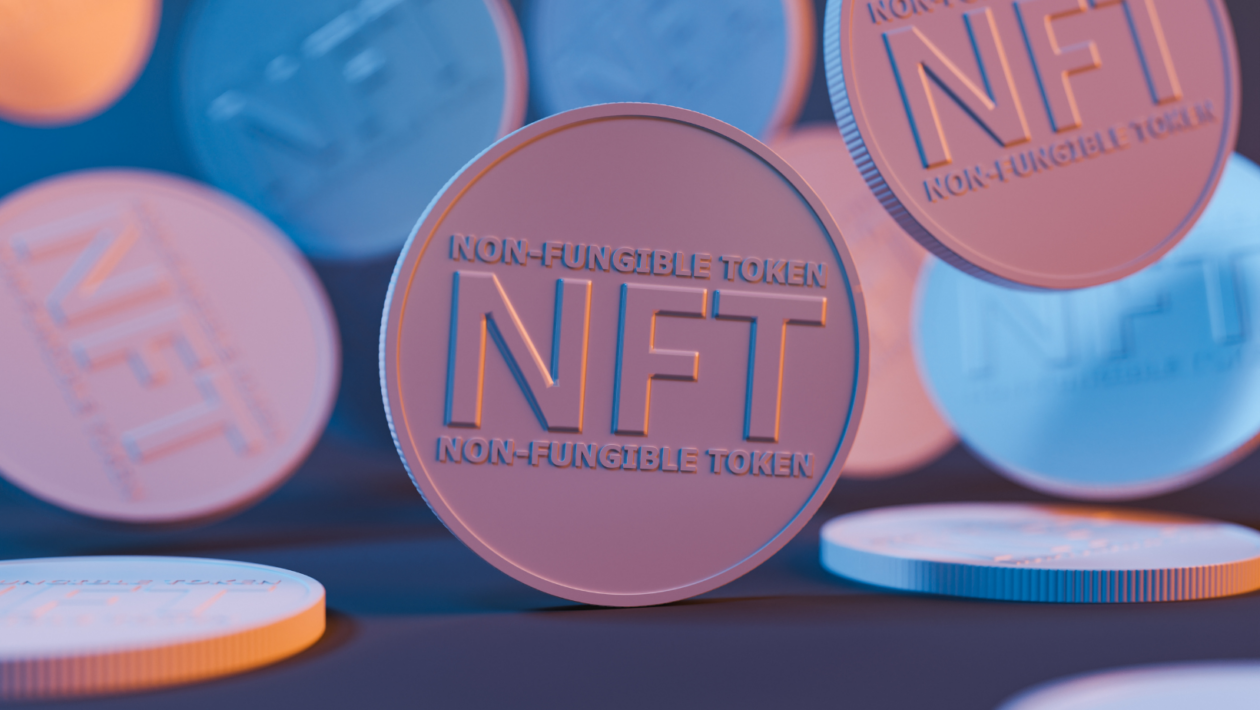Non-fungible tokens took off over the past year. By the year’s end, the NFT sales volume will have surged past US$27 billion as global giants like Nike, McLaren, Samsung and Louis Vuitton started dabbling with the technology.
The tens of billions may seem like a lot, but consider the potential of NFTs and how many more industries the technology can impact. In essence, NFTs are tamper-proof tokens of other assets minted directly on the blockchain. Given how they live on the shared blockchain ledger, NFTs are publicly traceable and offer the means to verify the origin and provenance of a digital asset for the first time.
NFTs aren’t just limited to digital collectibles. Any tangible or intangible asset can be tokenized, from digital and physical art to movies, songs, and even real estate. Due to their programmability, NFTs can be applied to numerous industries to create more transparency and enable trustless digital ownership. Below we’ll explore five of the most interesting NFT trends of 2021 and how tokenization is being applied across multiple industries.
NFTs are reviving the digital art industry
Ever since digital artist Beeple’s artwork Everydays: The First 5000 Days was sold for a record-shattering US$69 million as an NFT, interest in digital art has seemingly reignited. This is because NFTs present the first time in history that the origin and ownership of digital files can be authenticated and traced via blockchain.
Moreover, NFTs enable artists to sell their art directly to their fans, in the peer-to-peer fashion envisioned by Bitcoin’s whitepaper. These tokens also introduce new monetization options, like offering fractionalized NFTs, or selling an NFT of a work in progress, which gives fans a stake in the future success of the artwork. Applying smart contracts to NFTs can also create additional revenue sources, enabling artists to reap the profit from royalty payments and secondary sales of their artwork.
Some of the year’s most notable acquisitions of digital art NFTs include the US$17 million sale of Pak’s “The Fungible” and the US$3 million sale of Andy Warhol’s “Machine Made.” But NFTs can also be used to tokenize both tangible and intangible assets. Capitalizing on the hype, Beeple sold his first physical artwork and accompanying NFT for US$29 million, in November 2021. “Human One” consists of a seven-foot-tall box with LED screens on each side, showing an animation of an astronaut walking across shifting surrealist environments. What makes this artwork unique is that Beeple will continuously update the surroundings based on contemporary global events, keeping the piece relevant throughout his life.
NFTs are transforming play-to-earn gaming
NFTs have injected a newfound momentum in gaming, making blockchain-based, crypto-powered play-to-earn games a tangible reality. Applied to in-game assets, NFTs open a new chapter in gaming history, marking the first time that players are truly the owners of their assets, that they can sell for a profit on NFT marketplaces.
Axie Infinity was one of the most popular games of 2021, leveraging both NFTs and cryptocurrency. In August, Axie Infinity’s NFT market topped the US$1 billion trading volume, as the daily active player count also surged past 1 million shortly before. Going beyond gaming assets, Axie Infinity tokenized its characters, meaning that users who want to start playing must first buy three Axie NFTs. Given that there is a limited number of Axies, a constantly growing player base awards these NFTs with an element of scarcity, presenting the possibility of their price appreciation in the long run.
Axie Infinity’s player base hit over 2 million daily active users since. The game is most popular in the Philippines, Venezuela, and other developing countries, where players can earn a higher income than the national average wage. Other popular play-to-earn games leveraging NFTs include The Sandbox, MIR4 and CryptoBlades.
Gaming has also created significant interest in decentralized finance (DeFi) and dApps, short for decentralized applications: “Game-related traffic to DappRadar has already increased 14% from the numbers observed in October 2021 and is projected to increase 63% by the end of November. This upward trend is even more visible in the number of active wallets interacting with dApps — more than 2 million, of which more than half come through gaming,” Skirmantas Januškas, CEO and co-founder of DappRadar, told Forkast.News.
Moreover, Januškas believes that play-to-earn gaming may be the gateway towards mass crypto adoption in the near future: “If these trends continue, as I think they will with great force, we will literally play our way to mass adoption over the coming year or two.”
NFTs create fundraising opportunities for charities
As the world is slowly understanding the benefits behind tokenization, charity organizations are also starting to explore the potential of NFTs. NFTs can help set up charity initiatives in a decentralized, online manner with less overhead compared to classical auctions.
Applying smart contracts to NFTs creates even more charitable venues, as these algorithms can program NFTs to automatically transfer funds to a good cause with every transaction. NFTs and smart contracts algorithms are secured by blockchain technology, which offers a transparent, publicly traceable database that guarantees the funds are reaching the predetermined charity organizations. In addition, charity payments made with cryptocurrency offer lower transaction fees and near-instant settlements.
Applying NFTs to charitable initiatives could introduce new revenue streams to organizations. For instance, an awareness video can be tokenized and programmed to automatically send royalty payments every time the video is played or shared. And these are just some of the ways NFTs can be used to maximize fundraising.
Digital artist Beeple auctioned off one of the pieces of the famous “Everydays” collection called “Ocean Front” only to donate the US$6 million proceeds to the Open Earth Foundation to combat climate change. Ellen Degeneres has also held her series of NFT auctions, raising US$33,495 in the process and donating the sum to the World Central Kitchen, a food-relief foundation.
The ImpactNFT Exhibition in Hong Kong is also showcasing NFTs for good. The showcased digital artworks were constructed around 17 sustainable development goals of the United Nations, inviting collectors to admire and purchase NFTs to raise awareness.
Last but not least, Jack Butcher, the founder of Visualize Value, set up an NFT fund to help Afghan families affected by the recent humanitarian crisis. Each NFT was priced at 0.028 ETH, or US$89.50 at that time, covering the emergency needs of a family for an entire month. Yet, NFT-infused charity initiatives are still in their infancy. Seeing how NFTs are solving some of the fundamental issues of the current system, similar initiatives will likely become more popular in the future.
NFTs enable social perks, new subscription models
NFTs bring peak programmability to the table, which is one of their most attractive attributes, allowing them to offer a wide range of utility to their users. Hence, they can create new subscription models and online social perks.
U.S.-based Time magazine is leading the way among traditional publishing companies in experimenting with NFTs as alternative digital subscription models. Their new initiative, TIMEPieces, offers NFTs from 40 distinct artists and makes the owner a community member as well. TIMEPieces functions as an alternative to Time’s digital subscription, unlocking all content for NFT holders and giving them access to exclusive digital experiences and events.
Loud Market, a music NFT marketplace, is aiming to disintermediate the music industry. Loud enables musicians to mint their songs as NFTs and sell them directly to their fans. Loud is a great example of how NFTs can remove profit-seeking middlemen and facilitate trustless, peer-to-peer transactions. Decentralized music streaming platform Audius is also aiming to democratize the music industry, by offering artists 90% of the sales revenue, with the other 10% going to decentralized node operators securing the network.
Other NFT collections, like the Bored Ape Yacht Club, or BAYC for short, offer social perks to their holders. BAYC NFTs double as a club membership to the Yacht Club — a social club in the metaverse, exclusively available to BAYC NFT holders. The first available area in the virtual club is THE BATHROOM, a members-only canvas where ape-holders can paint a pixel on the wall every fifteen minutes.
Another similar metaverse social club in the making is the Shiboshis Social Club — an exclusive private club for Shiboshi NFT owners. SHIBOSHIS are a collection of 10,000 NFTs, completely selling out within 34 minutes after the launch, which offer access to the members-only social club. Shiboshis owners will gain access to Shiboshis The Game, enabling holders to employ their NFTs in strategic gameplay.
For metaverse-based social clubs, NFTs function similarly to a digital identity, offering holders access to exclusive perks, content, and events. Employing NFTs as the identity layer of metaverse projects will likely become more popular, due to the uniqueness and censorship resistance of each token.
Asset tokenization disrupts traditional industries
Beyond creating non-fungible assets in the metaverse, NFTs can be leveraged to tokenize both tangible and intangible assets. Each NFT can function as a traceable, censorship-resistant ownership certificate for any given asset, revealing the most important information about it publicly via the blockchain ledger.
As such, NFTs can be used to tokenize real-world assets, such as real estate. Indonesian real estate investment ecosystem LABS is offering fractionalized NFTs of timeshare resorts. For each resort, LABS Group auctions calendar days as NFTs, to make real estate investment more accessible to the public. Similar initiatives may become more popular, resulting in a more democratized real estate investment space.
The film industry also stands to be disrupted by the potential of NFTs, as Quentin Tarantino became one of the first big directors to auction seven uncut scenes from Pulp Fiction as NFTs. The NFTs will include the uncut first handwritten scripts for the movie, as well as Tarantino’s exclusive commentary. Naturally, the content will only be viewable by the owner of the NFT.
The publishing industry also stands to benefit from the rise of non-fungible tokens as one of Hong Kong’s oldest newspapers, The South China Morning Post has started dabbling with NFTs. In July, SCMP announced the launch of ARTIFACT, a standardized metadata structure for recording historical assets as NFTs. By tokenizing accounts of important historical events, SCMP hopes to create more transparency in the legacy publishing industry, since every tokenized news story is publicly traceable and censorship-resistant.
What does 2022 hold?
The meteoric rise of NFTs sparked some skepticism, as non-fungible tokens were considered little more than a bubble at the beginning of the year. Yet NFTs have since proven their utility, and they are becoming one of the core components of the metaverse.
“As NFTs and crypto will be one of the building blocks for the emerging metaverse, Binance NFT hopes to present a one-stop NFT insurance platform for in-game assets, art, collectibles, and much more,” Helen Hai, head of Binance NFT, told Forkast.News. “Binance NFT also strives to accelerate the adoption of NFTs by working closely with partners.”
As brands like Facebook, Nike, and Microsoft are continuing their metaverse experiments, NFTs will gain more utility in these digital worlds. With big brands like Visa buying into NFTs, tokenization will likely disrupt multiple industries, while gaining traction as the digital ownership certificates of the metaverse.





